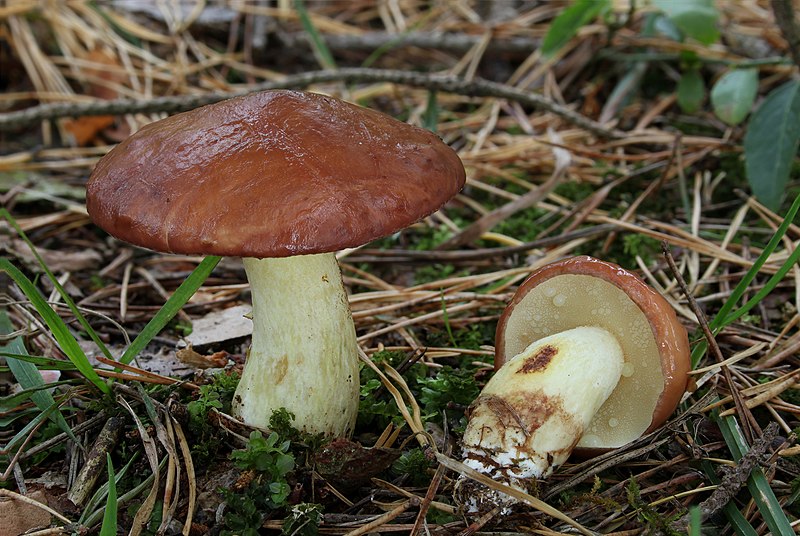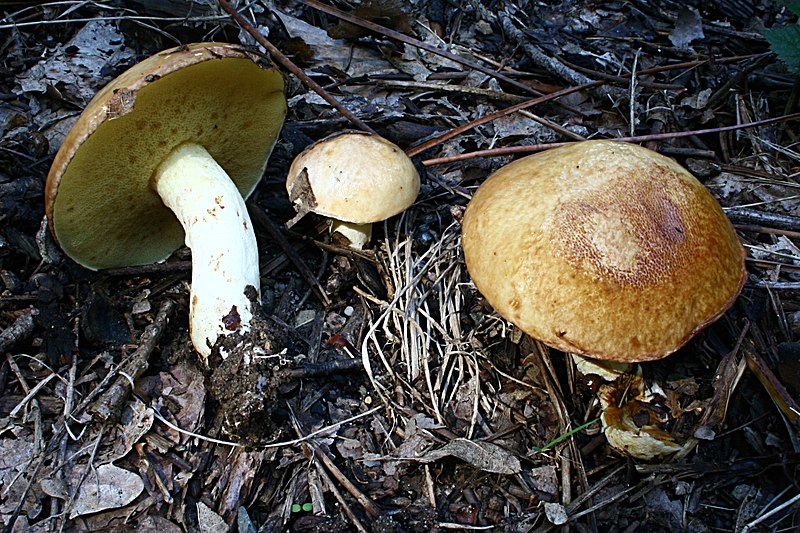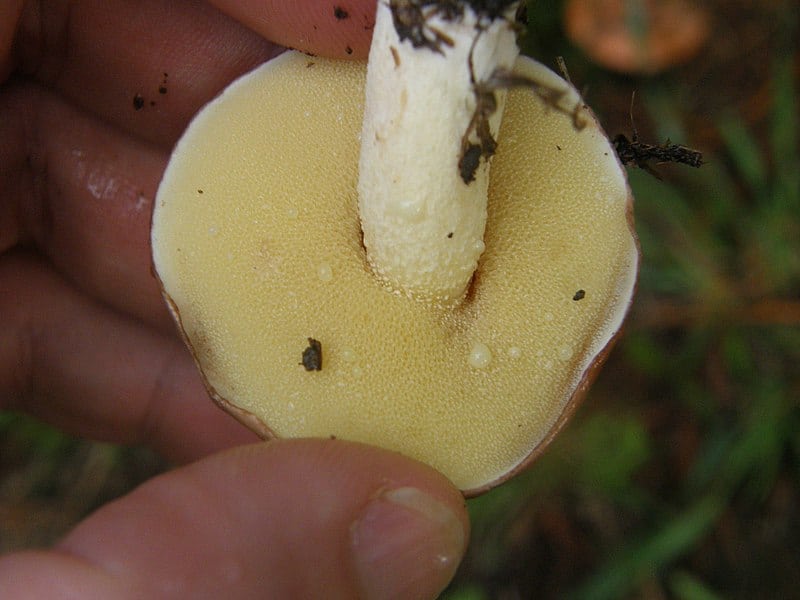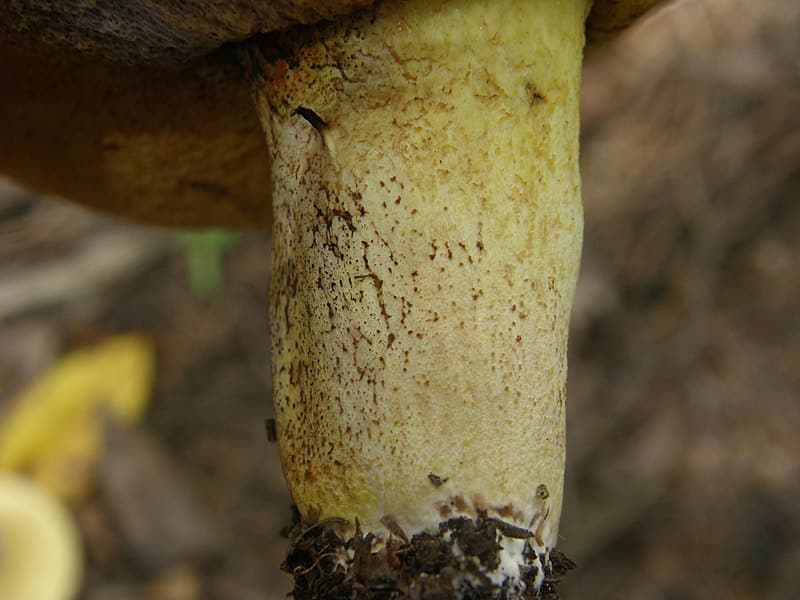Weeping Bolete Identification – Suillus granulatus
Heads up
The Weeping Bolete can be recognized by several distinct features, which help differentiate it from other similar mushrooms.
Weeping Bolete: Key Parts in Photos




How to identify Weeping Bolete
Habitat: This mushroom thrives beneath coniferous trees. Specifically, you can find it predominantly under Scots Pine trees.
Cap: The cap of the Weeping Bolete takes on a hue ranging from cinnamon to orange-brown. When touched, it feels sticky, and as it dries, it turns shiny. Growing between 1.5 and 4.5 inches in diameter, its shape is mostly convex. Inside, the cap reveals a pale yellow, soft flesh that remains unchanged even when you cut it.
Tubes and Pores: The Weeping Bolete possesses tiny circular pores that exude milky droplets, lending it the name “Weeping Bolete.” As these droplets dry up, they turn darker. The tubes are shallow and share the lemon-yellow hue of the pores.
The Stipe: The stipe of this mushroom is pale yellow and has a smooth texture with no ring. Interestingly, closer to the top of the stipe, you’ll find it turns granular. This granulated appearance, forms from milky droplets that dry up on the stipe flesh.
Spores: The spores of the Weeping Bolete are somewhat spindle-shaped. They measure between 8-10 x 2.5-3.5μm and are smooth. If you were to observe the spore print, it would come out as a brownish yellow color.
Want to learn more?

Disclosure: This post includes affiliate links. If you make a purchase through these links, we may earn a commission at no extra cost to you. We appreciate your support, as it helps keep this website running. Alternatively, you can search for the book title on Amazon if you prefer not to use the links. Thank you for your understanding and support!
